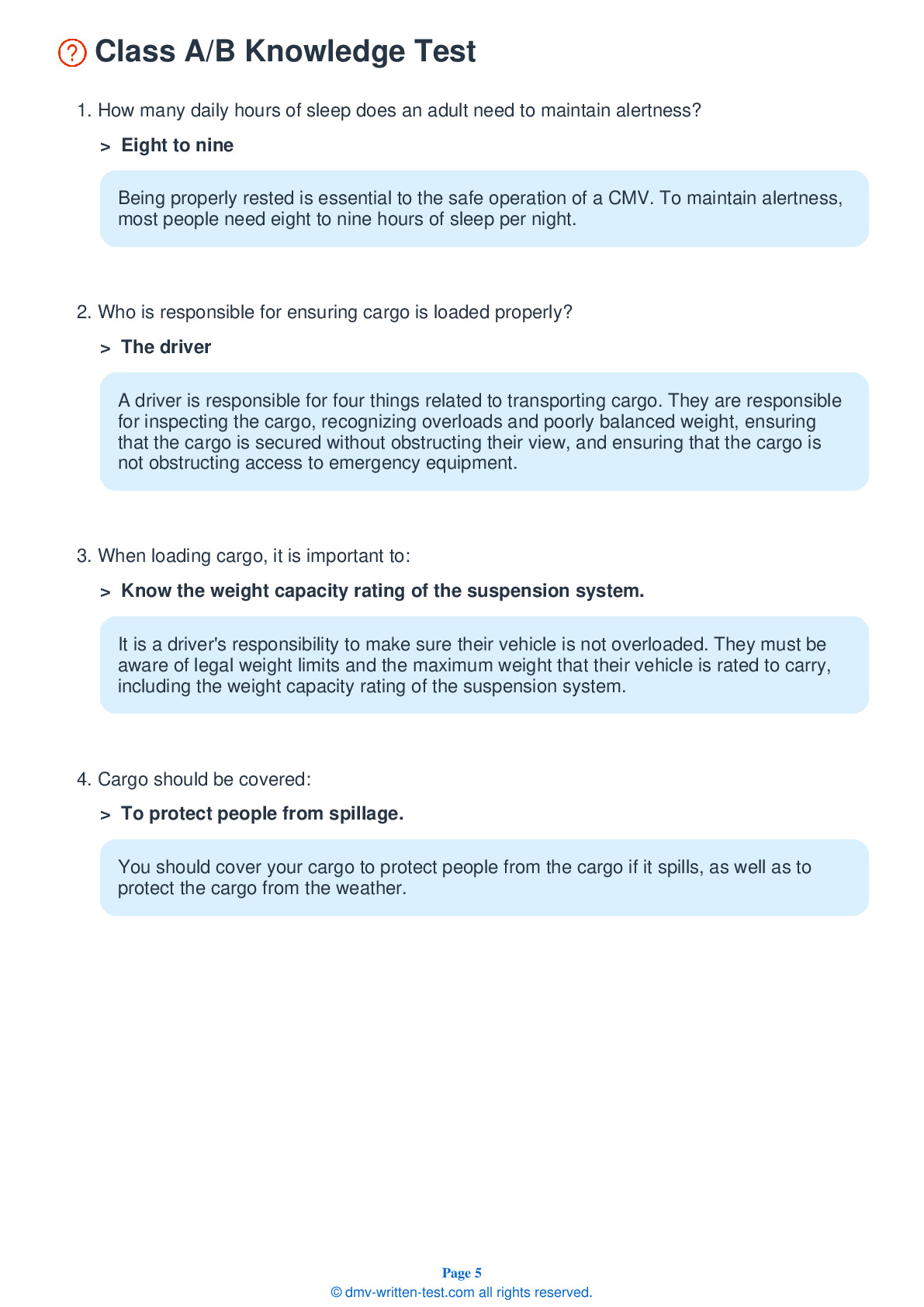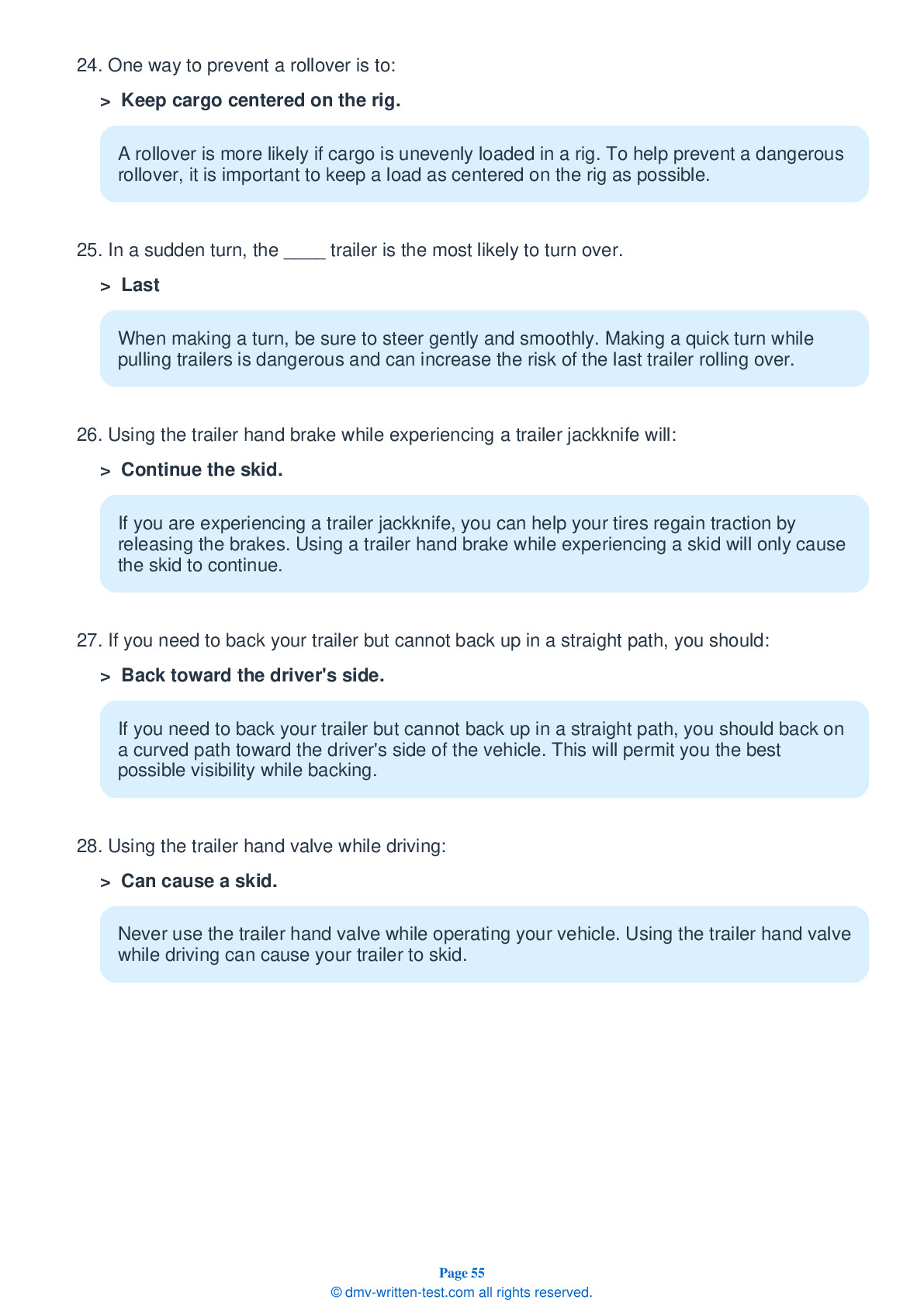Combination
All applicants who are applying for a Class A CDL should be prepared to take the Combination test. This test covers information found in Section 6 of the Commercial Driver License Manual. Section 6 provides the information needed to safely operate tractor-trailers, doubles, triples, and straight trucks with trailers. The test is made up of 20 multiple-choice questions, and applicants will need to correctly answer a minimum of 16 questions to pass. The Combination test is not a replacement for the Double/Triple endorsement test.
Number of Question
Passing Score
8. Pushing in the trailer air supply control will:
Explanation
Push in the trailer air supply control to supply the trailer with air. Pull out the trailer air supply control to turn off the air supply and activate the emergency brakes.
9. When backing up while coupling a trailer, the tractor should be positioned:
Explanation
When backing up to couple a trailer, you should position the tractor directly in front of the trailer. Trying to couple while backing at an angle could cause the trailer to move and the landing gear to break.
10. If you use the trailer hand brake while your trailer is skidding, it will:
Explanation
If you are experiencing a trailer jackknife, you can help your tires regain traction by releasing the brakes. Using a trailer hand brake while experiencing a skid will only cause the skid to continue.
11. When braking with ABS, you should:
Explanation
When operating a vehicle with an Anti-Lock Braking System (ABS), you should apply your brakes in the same manner as you would if operating a vehicle without ABS.
12. The "crack-the-whip" effect can:
Explanation
Trailers can overturn as a result of the "crack-the-whip" effect. The last trailer in a combination is the most prone to tip over due to this effect. Drivers should be aware of the rearward amplification of their specific vehicles and drive accordingly.
13. Place the trailer air supply control in its "emergency" position to test:
Explanation
Be sure to test the trailer emergency brakes before beginning a trip. After ensuring that the trailer rolls freely, you can test the emergency brakes by pulling out the trailer air supply control, or placing it in the "emergency" position. Pull forward slightly with the tractor and make sure the trailer does not move.
14. The trailer hand valve:
Explanation




